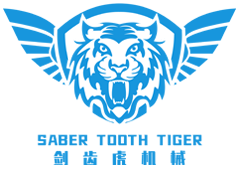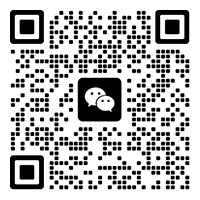-
Why Choose a CNC Busbar Bending and Punching Line for Your Production Needs?
Why Choose a CNC Busbar Bending and Punching Line for Your Production Needs? In today's fast-paced manufacturing landscape, efficiency, accuracy, and adaptability are paramount. One of the significant advancements in the production realm is the CNC Busbar Bending and Punching Line. This cutting-edge technology not only enhances the quality of electrical components but also streamlines production p
Why Choose a CNC Busbar Bending and Punching Line for Your Production Needs?
In today's fast-paced manufacturing landscape, efficiency, accuracy, and adaptability are paramount. One of the significant advancements in the production realm is the CNC Busbar Bending and Punching Line. This cutting-edge technology not only enhances the quality of electrical components but also streamlines production processes, making it an essential investment for manufacturers in the electrical and electronic industries. In this article, we will delve into the numerous benefits and features of CNC busbar systems, explaining why they are the ideal choice for your production needs.
A Comprehensive Overview of CNC Busbar Bending and Punching Lines
CNC (Computer Numerical Control) Busbar Bending and Punching Machines are sophisticated pieces of equipment designed for the efficient manipulation of metal busbars. Busbars are essential components in electrical distribution systems, serving as conductive paths for electricity. With precise bending and punching capabilities, these machines can produce complex shapes and designs, significantly enhancing production capabilities.
The Evolution of Busbar Manufacturing Technology
Historically, busbar manufacturing relied heavily on manual labor and rudimentary tools, resulting in inconsistencies and inefficiencies. The introduction of CNC technology has revolutionized this sector. CNC machines automate the bending and punching processes, ensuring greater precision while reducing labor costs. This evolution reflects a broader trend in manufacturing: the shift towards automation and digitalization.
Key Features of CNC Busbar Bending and Punching Lines
These advanced machines come equipped with features that maximize efficiency and accuracy, including:
- **Automatic Material Feeding**: Reduces manual intervention and speeds up the production process.
- **High Precision CNC Control**: Ensures that every bend and punch is executed flawlessly.
- **User-Friendly Interface**: Allows operators to program complex tasks easily.
- **Versatile Processing Capabilities**: Can handle various materials and thicknesses, accommodating different production needs.
Advantages of Using CNC Busbar Bending and Punching Lines
Choosing a CNC Busbar Bending and Punching Line offers numerous advantages that can significantly impact your production capabilities.
1. Enhanced Precision and Quality
One of the foremost benefits of CNC technology is the unparalleled precision it offers. CNC machines can execute bends and punches with tolerances that manual methods cannot achieve. This level of accuracy not only improves the overall quality of the busbars but also ensures compliance with industry standards and regulations.
2. Increased Production Efficiency
CNC Busbar Bending and Punching Lines operate at a much faster pace than traditional methods. With automation, the machines can run continuously, reducing downtime and increasing output. This efficiency translates directly into higher production rates, allowing businesses to meet growing demands without compromising quality.
3. Cost-Effectiveness
While the initial investment in CNC technology may seem significant, the long-term savings are substantial. Reduced labor costs, minimized material waste, and increased production speeds contribute to a lower cost per unit. Furthermore, the durability and reliability of CNC machines mean fewer repairs and maintenance costs over time.
4. Flexibility and Customization
CNC Busbar Bending and Punching Lines offer remarkable flexibility in production. They can be easily programmed to produce different busbar designs and sizes, accommodating varying customer requirements. This adaptability is crucial in a market where customization is increasingly in demand.
5. Improved Safety and Ergonomics
Automation significantly enhances workplace safety. CNC machines minimize the risk of injury associated with manual handling and machining, creating a safer environment for operators. Moreover, user-friendly interfaces reduce the complexity of operation, allowing staff to focus on overseeing production rather than executing potentially hazardous tasks.
Applications of CNC Busbar Bending and Punching Lines
The versatility of CNC Busbar Bending and Punching Lines makes them suitable for various applications across industries.
1. Electrical Infrastructure
CNC busbars are primarily used in electrical substations and distribution systems, where they facilitate the safe and efficient distribution of electricity. Manufacturers can produce busbars in various configurations to suit specific applications, enhancing electrical infrastructure reliability.
2. Renewable Energy Systems
As the demand for renewable energy sources increases, CNC busbars play a crucial role in solar and wind energy systems. Their precision bending capabilities allow for the production of complex designs necessary for modern energy solutions.
3. Industrial Automation
In automated manufacturing environments, CNC-produced busbars are essential for connecting various components within machinery. Their reliability and precision ensure that industrial systems operate effectively and efficiently.
4. Transportation and Automotive Sectors
The transportation industry, particularly in electric vehicles, relies heavily on efficient power distribution systems. CNC busbars provide the necessary reliability and performance to support these advanced technologies.
Choosing the Right CNC Busbar Bending and Punching Line
Selecting the appropriate CNC busbar line for your specific needs requires careful consideration. Here are some factors to keep in mind:
1. Material Compatibility
Ensure that the CNC machine can handle the materials you work with, including copper, aluminum, and other metals. Check the specifications for thickness and width to ensure compatibility.
2. Production Volume
Assess your production requirements. Some machines are designed for high volume, while others are better suited for custom, low-volume runs. Choose a machine that aligns with your business needs.
3. Software and Control Systems
Evaluate the software capabilities of the CNC machine. A user-friendly interface with advanced programming options will make a significant difference in your operational efficiency.
4. Support and Maintenance
Consider the manufacturer’s reputation for support and maintenance. Reliable technical support and readily available spare parts can prevent costly downtime.
5. Budget Considerations
While investing in a CNC Busbar Bending and Punching Line can be expensive, it’s essential to view it as a long-term investment. Calculate the return on investment by considering potential cost savings and production efficiency gains.
Common FAQs About CNC Busbar Bending and Punching Lines
1. What types of materials can be processed with a CNC Busbar Bending and Punching Line?
CNC Busbar Bending and Punching Lines can process a variety of materials, including copper, aluminum, and other conductive metals.
2. How does CNC technology improve accuracy in busbar manufacturing?
CNC technology utilizes computer programming to precisely control the bending and punching processes, ensuring consistent and accurate results.
3. What is the average lifespan of a CNC Busbar Bending and Punching Machine?
With proper maintenance, these machines can last for many years, often exceeding a decade of reliable service.
4. Can I customize busbar designs using CNC technology?
Yes, CNC Busbar Bending and Punching Lines are highly versatile, allowing for customization of designs to meet specific customer requirements.
5. Is training required to operate a CNC Busbar Bending and Punching Line?
While basic training on the machine’s operation is recommended, many modern CNC machines feature user-friendly interfaces that simplify the learning process.
Conclusion
Investing in a CNC Busbar Bending and Punching Line is a strategic decision that can significantly enhance your production capabilities. The advantages of precision, efficiency, cost-effectiveness, and adaptability make these machines an essential addition to any manufacturing setup. By understanding the features, advantages, and applications of CNC technology, you can make informed decisions that propel your business forward in the competitive landscape of electrical and electronic manufacturing. For manufacturers seeking to stay ahead of the curve, embracing CNC busbar systems is a step toward innovation and success.
Related news




